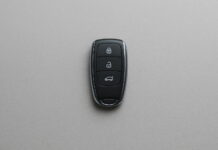SPONSORED CONTENT
Automotive software development first appeared in cars during the 1960s. As a result, the industry has evolved dramatically, with electronics, particularly software, now serving as major sources of innovation. Automotive software enhances dependability by incorporating active and passive safety systems such as anti-lock brakes and electronic stability control. Additionally, consumer electronics are gradually being integrated into automobiles.

The Purpose of Software Development
The objective of any automotive software development involves creating a new feature or improving an existing one. Such features provide additional benefits and conveniences to the driver, other passengers, mechanics, and carriers, as well as ensuring legal compliance, simplifying maintenance, and increasing design and manufacturing efficiency.
Technical implementation
The technical realization can be mechanical, hydraulic, or electronic. Several of these technologies are frequently combined, and electronics are increasingly playing an important role in implementing many automotive innovations. The use of electronics and software, which form the logical core of systems, allows the intelligent functions of the drive, chassis, and rest of the vehicle to be effectively implemented. Electronics now control and monitor virtually all functions in all classes of vehicles. Technological progress and electronics development enable the realization of many new, more powerful functions through the use of software.
Software requirements
The software requirements in an automobile vary greatly. Many engine management and traffic safety systems must ensure that control operations are responsive enough to keep up with the physical process. As a result, when controlling very fast physical processes such as motor control or driving dynamics, computations must be completed quickly. Furthermore, many industries place a high value on dependability. This is especially relevant for safety functions. Sophisticated diagnostic systems monitor the vehicle’s software and electronics.
Major complexities
Automotive software is used in a wide range of vehicle variants and models. It must thus be easily adaptable to the respective systems. It includes calibration parameters and program cards to accomplish this. Their number in a vehicle can reach into the tens of thousands. These controllable variables have numerous interdependencies. Furthermore, the degree of interconnection between individual systems is steadily increasing. A single function is increasingly being split across multiple systems or ECUs.
Most automotive software is designed for specific applications and then integrated into a single system. It is also known as embedded software, which is stored on a permanent memory device. Many functions are frequently developed and refined over long periods of time in various parts of the world. Because spare parts must be available even after the production of a specific vehicle is completed, the electronics in a vehicle must have a relatively long service life of up to 30 years.
Who Monitors Compliance with Standards?
The Association for Standardization of Automated and Measurement Systems (ASAM) promotes standardization in the automotive industry in terms of data models, interfaces, and syntax. ASAM has established several standards for connecting an ECU to a computer or data input terminal. The ASAM-MCD1 standard (MCD – Measurement, Calibration, and Diagnosis) supports a variety of data transfer protocols. Using the ASAM-MCD2 specifications, it is possible to access binary data in the ECU while also displaying and processing the data as physical values. The ASAM-MCD3 standard also allows for automated processes, such as data calibration. Other ASAM standards govern activities such as the exchange of functional descriptions and data.
Electronic standards
International Electrotechnical Commission (IEC) is an organization that sets standards in electrical and electronics engineering. The IEC offers three systems of analysis to ensure that the products meet international standards. The IEC works in partnership with ISO, ITU, and other standards bodies.
Software standards
The Motor Industry Software Developers Association (MISRA) is an automotive industry organization that creates guidelines for the development and implementation of dependable software in automotive systems. It is best known for its programming standard, MISRA-C. It establishes guidelines for reliable C programming. The goal of this standard is to prevent run-time errors caused by unreliable C constructs and structural weaknesses caused by programmers’ misunderstandings, as well as to protect expression correctness. Many rules can be automatically checked and considered when generating codes.
OSEK and VDX standards
The standardization body “Open Systems and their Interfaces for Automotive Electronics” (OSEK) emerged from a project of the German automotive industry. Later came the Vehicle Distributed Executive (VDX) initiative of the French automotive industry. Standardization of basic software components is carried out under the auspices of OSEK/VDX in the following areas:
- Communication (data exchange within and between ECUs);
- Operating system (real-time execution of ECU programs and basic services for other OSEK/VDX modules);
- Network management (configuration and control).

Quality Control in Software Development
As with any technical product, automotive software development also utilizes many quality control tools. Unlike mechanical and electrical engineering, quality control plays a less significant role in software development because it is relatively easy to reproduce. The important points here are the overall functionality of the system, quality standards, mastery of complexity, and application. Since the software in an automobile also covers safety-relevant systems such as dynamics control and DAS, quality control plays an important role. In addition, the economic representation of software quality is very important, especially in complex systems.
Automotive Features and Technology Outlook
New automotive features and technologies will continue to increase the amount of software in cars – even in the budget segment. At the same time, the number of ECUs in many vehicles remains the same. As a result, the capabilities of some ECUs continue to expand. In general, system distinctions between different ECUs are disappearing, such as in hybrid drive control. Thus, automobile electronics are becoming more complex. As a result, the economic component will play an important role in future automotive software and development environments.
Another trend is the increasing virtualization of development, where parts of later development phases such as testing and calibration are integrated into simpler development phases so that, for example, already functional models can be cyclically tested and supplied with data on a preliminary basis. In this way, failures are detected earlier and weaknesses are remedied just before the start of series production.
What It All Means
The development of automotive software has changed the automotive industry. The use of electronics and software has made it possible to come up with new features and systems that make the car more enjoyable to drive and safe as well. The future of automotive software development also holds a lot of potential for further enhancements of vehicle performance, safety, and comfort, which is why it is interesting to track this industry.






















